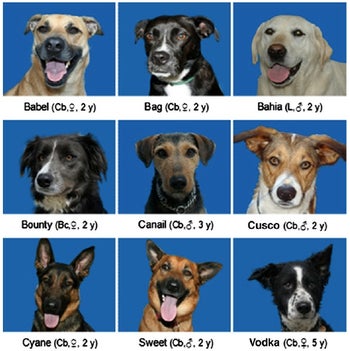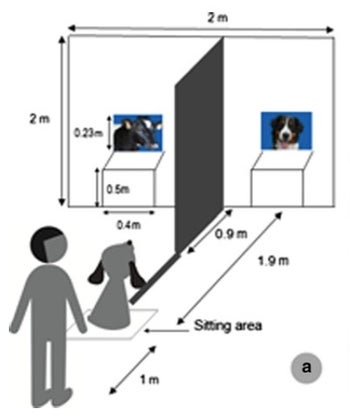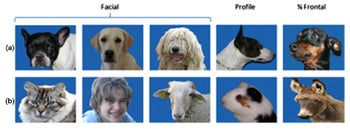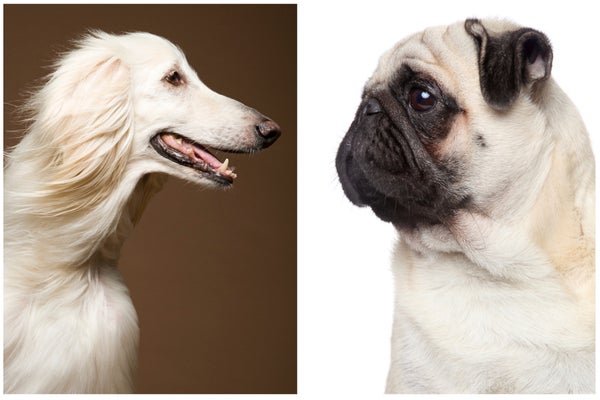This article was published in Scientific American’s former blog network and reflects the views of the author, not necessarily those of Scientific American
Do you see dogs everywhere?
My ears perk up to the jingle jangle of metal-on-metal, hopeful that it predicts a dog and his collar, disappointed when it turns out to be keys on a belt (boring).
A person walking down the street with their arm outstretched holds the promise of a leash with a dog on the other end (sometimes it’s a stroller holding a kid. Oh well).
On supporting science journalism
If you're enjoying this article, consider supporting our award-winning journalism by subscribing. By purchasing a subscription you are helping to ensure the future of impactful stories about the discoveries and ideas shaping our world today.
From a distance, my eyes play a cruel trick on me, where shopping bags are dogs and dogs are shopping bags until I get close enough and one wins out (obviously I'm rooting for the dog).
But catch any part of a tail, and I know I'm in. You could say my motto is, “dog, until proven otherwise.”
How about dogs?
Does a dog know, merely by sight, that an approaching being is a fellow dog? Before you answer, remember this: Canis familiaris is the least uniform species on the planet. Members of this species come in a wide range of body shapes and sizes from itty bitty teeny weeny to absolutely ginormos. Adult members of this species appear as tight little packages, huge weightlifters, lean ballerinas, elongated hotdogs and everything in between.
Does a Pug look at an Afghan Hound and say to themselves, "Hello, dog!" or does a Pug look at an Afghan Hound and say, "WHAT IN THE WORLD ARE YOU?" and only after olfactory investigation (smelling) does the Pug realize, “Oh my goodness. How silly of me. You're a dog. Sorry for the confusion my large, long-snouted compatriot."
A number of researchers have essentially wondered what Pugs think of Afghan Hounds. Are dogs able to identify other dogs solely by appearance, they wondered? If olfactory cues are taken out of the equation, would a dog still know another dog when he sees one?
A team of researchers based in France took on this question, publishing their findings in Animal Cognition in 2013. Nine companion dogs joined as study subjects. They all had basic training and extensive experience with both dogs and people, and notably, the participants weren’t uniform in appearance -- two were purebred (Border collie and Labrador), and the rest were mutts. Below are the study subjects in all their photographic glory (while they are all my favorites because they are dogs, I vote Cusco winner of Best Eyeliner and Best Ears, while Babel, Cyane and Sweet tie for Most Photogenic).

The experimental setup was simple enough: the nine subjects saw two screens, one on the right and one on the left with a divider between. In each trial, two images would appear simultaneously on both screens, and dogs were reinforced with a click and rewarded with a treat for approaching the "correct" screen — more on that in a moment. Here's what the experimental layout looked like:

To find out if dogs could ID other dogs based on appearance alone, the researchers first had to create a common language with their dog subjects. They did this with the help of three training sessions where dogs received a treat only when they approached the screen that had a picture of a dog’s face. Importantly, the same dog picture was used throughout the training sessions. During the training phase, the other screen was either all black, all blue, or had a picture of a cow’s face. The dog subjects were not rewarded if they approached any of the other non-dog pictures. This created a common language: “You are rewarded for approaching this ‘dog’ image, nothing else.”
To proceed, the dogs had to approach the dog image 10 out of 12 times in two consecutive sessions, which is better than approaching 'dog' by chance. All nine dogs were able to do this. Common language secured!
.jpg?w=350)
Then came the test. Dogs were presented with a wide variety of never-before-seen dog faces paired against never-before-seen non-dog faces. As before, dogs had to approach the dog image and avoid the non-dog image to get a treat. This was no longer an easy feat as the dog images now captured dogs’ vast morphologic diversity in shape, color, size, head shape, ear position, you name it. On top of that, the dog images were now pared against a wide range of non-dog faces including human faces as well as domestic and wild mammals like cats, sheep, gerbils, cows, rabbits, reptiles, and birds, among others. Images were presented head-on (full face) or as a profile. Below are examples of faces dogs saw in the study:

Examples of study stimuli. Top row: dog images, bottom row: non-dog images. Credit: "Visual discrimination of species in dogs (Canis familiaris)," by Autier-Dérian D, Deputte BL, Chalvet-Monfray K, Coulon M, Mounier L., in Animal Cognition, 16, 637—651; February 2013
The dogs prevailed! The nine subjects successfully identified "dog" from “non-dog” faces. Some dogs, like Babel, Bag, Cyane and Vodka, were able to do so quite quickly, taking few sessions to approach the required 10-out-of-12 dog images. Other dogs, like Bahia and Cusco, were slower on the pickup and took more sessions to identify “dog” from “non-dog” (dog subjects needed anywhere from 2 to 13 sessions to meet criteria). This is not to say, of course, that Bahia and Cusco don't know a dog when they see one. The researchers highlight that a number of factors — like dog personality, learning styles and strategies, and motivation — can affect dog behavior and performance, particularly when it comes to this type of task.
Even so, the study suggests that despite their wackadoodle appearances, dogs can identify other dogs by sight alone. Dogs seem to have a sense of who (or at least which images) falls in the category of “dog” and who does not. Exactly which features dogs use when tuning into “dog," though, the current study can't say. They offer that as a natural next step in the research.
Autier-Dérian D, Deputte BL, Chalvet-Monfray K, Coulon M, Mounier L. 2013. Visual discrimination of species in dogs (Canis familiaris). Animal Cognition, 16, 637—651.
